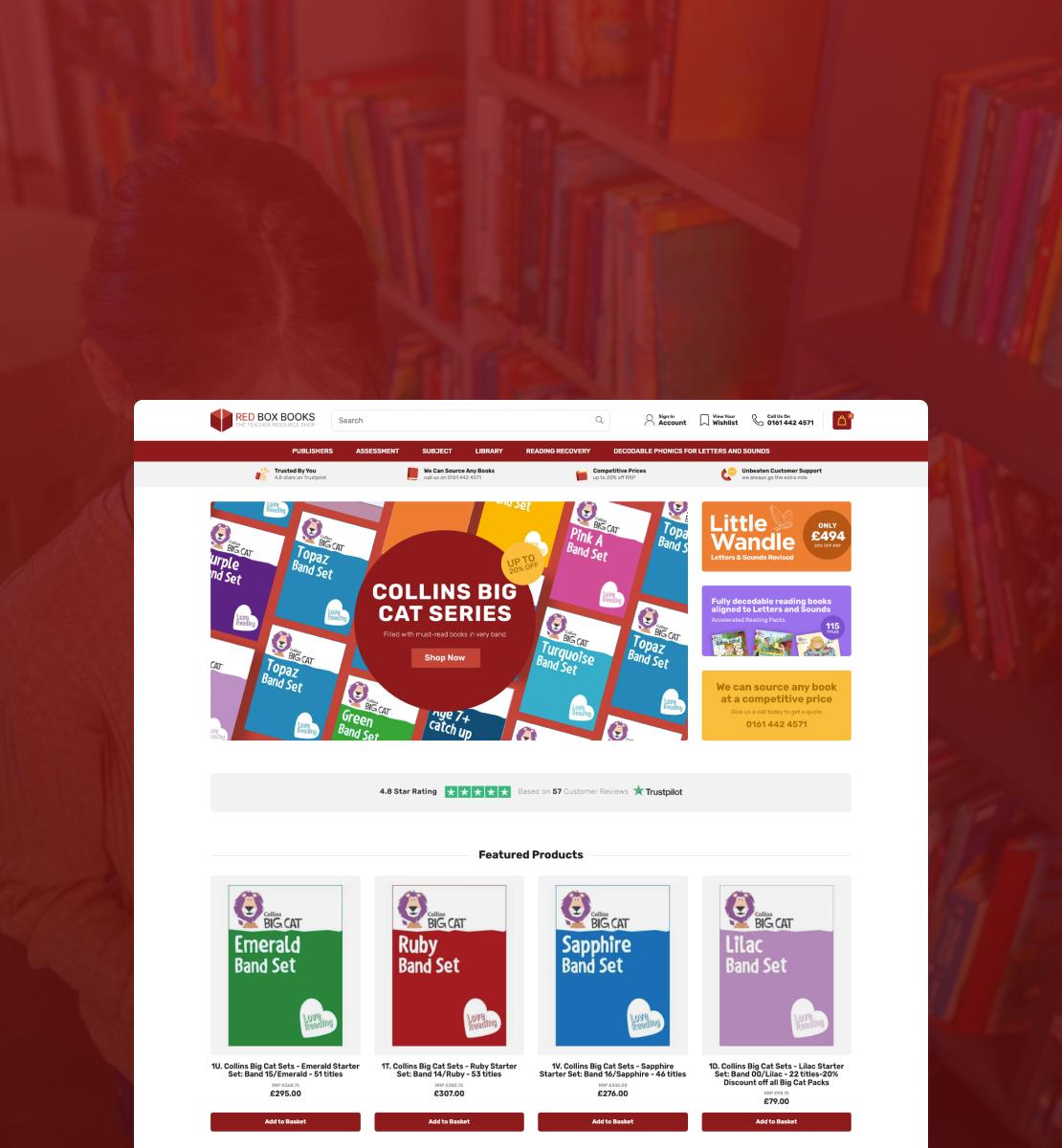When it comes to launching a product-based business, there’s a lot to consider.
Compared to a service business, a product-based business requires tons of upfront investment. Therefore, it’s key that your marketing strategy, fulfilment capability and website functionality are all up to scratch to ensure you start off on the right foot!
Unlike a service business that simply requires a website landing page and a modest social media presence to book the first client, selling your first product takes investment in research, development, prototyping, manufacturing, photography, packaging and sitting on stock to fulfil potential orders coming your way.
Launching a successful product-based business takes dedication, determination and steadfast belief in the product you’re developing. Whilst we can’t give you these personal values, we do have 10 helpful steps that will take your product business from a vague idea to a wonderful reality!

Photo by The Retro Store on Unsplash
1. Undertake Customer Research
So you’ve got a brilliant idea for a product that solves a problem for potential customers or adds joy to their lives, right? Well you need to get to know exactly who you’re aiming your product at to ensure you reach the right people through the right channels.
Conduct extensive customer research before launching your product to give your business the best chance of success. Ask yourself the following questions:
- Who is my target audience?
- Where do they spend their time online?
- How will this product impact their lives?
When you have an idea of your target audience, it’s time to send out surveys, hold focus groups (which can be as simple as getting a group to meet in a coffee shop!) and engage with your ideal customers to get a deeper understanding of their problems and how your product could solve them or enhance their lives in some way.

Photo by Emma Dau on Unsplash
Talking to potential customers is invaluable for product-based businesses as you get a real insight into their likes, dislikes, values, circumstances and core passions that will drive them to ultimately purchase (or not purchase) your product. Read our blogs on Getting To Know Your Audience and Ecommerce Customer Journey Mapping to delve deeper into this topic.
2. Carry Out Competitor Analysis
Now you know your audience inside out and have a deep understanding of your key customer personas, it’s time to get to grips with who you’ll be up against to gain their attention. First, identify your direct competitors: These are the brands that are competing against you with the same product and marketing it to the same audience. Next, it’s time to work out who your indirect competitors are: Perhaps they have a different product but operates within the same industry and target market. How will you brand your product to stand out? Why would a customer choose your brand over a competitor?
Within your competitor research it’s always a good idea to carry out a SWOT analysis on your product-based business. This will help you to identify your own strengths and weaknesses whilst also making you aware of the potential external threats and opportunties coming your way. As they say, knowledge is power. Undertaking this analysis before launching your business will allow you to prepare for every eventuality.
3. Niche-Down Your Market
The number one killer of a brand new product business is trying to people please. The most successful brands are the ones who niche-down their target market to a devote few. Whilst it may seem counterintuitive to target a small audience and expect big results, it will enable you to truly focus your marketing message and deeply resonate with the engaged customers you are reaching.
Considering that word of mouth marketing is 5 times more effective at converting customers than paid ads, it’s clear that focusing your energy on gaining brand advocates (those who will scream and shout about how great your brand is purely because they love it so much) is much more lucrative than casting your net extremely wide without resonating with anyone at all.
4. Ensure Product-Market Fit
Ensuring a product-market fit is crucial to a successful launch. Now you’ve narrowed down your target audience, it’s time to ensure that your product fulfils your market and the market is yearning for the brilliant product you’ve created. So how do you do that? A great way of doing this is to send product samples to key influencers and stakeholders within your industry. Ask them to provide honest feedback, share the product with their inner circle and get their opinions too.
Doing this will allow you to tweak and perfect your branding, messages, the product itself or the market you’re targeting before the launch. That way, you know your product is going to be hit, before it even hits the shops!
5. Pinpoint Your Product Value Proposition
Understanding and identifying your unique value proposition is essential as this will underpin all of your marketing tactics and branding decisions. To do this, you’ll need to determine how your product is relevant, valuable and distinct from other similar products.
Your value proposition should address your ideal customer’s problem whilst communicating that your product is the solution they’ve been waiting for! A good value proposition will utilise their target audience’s tone of voice and language to instantly resonate with them. Here is a brilliant example of a product value proposition from online florist, Bloom & Wild:
“Our mission is to make sending and receiving flowers a joy, using technology to turn emotions into an action in the simplest and most beautiful way possible.”
6. Develop Your Brand
Branding and marketing go hand in hand. Take the time to perfect your brand identity, voice, personality and values before launching your product to give yourself the best chance of a . Once you’ve identities your core values, every action that you take, every message that you write and every decision that you make should be guided by these values. Naturally, it will evolve as your business grows so be sure to listen to your audience and adapt as necessary.
Visit our blogs more tips on How To Master Your Brand’s Voice and Building A Strong Brand.
7. Create A Comprehensive Marketing Strategy
Developing a sleek marketing strategy that actually drives results can be a difficult task. But you’re in a brilliant position to get stuck in to your marketing plan as you’ll already have done a lot of the hard graft! When it comes to creating a marketing strategy, understanding your customer persona, value proposition and where you sit within the market is crucial. All of these factors will influence which marketing channels you focus on (whether it’s social media, email marketing or traditional tactics) and will help coin your key messages.
The key to any marketing strategy is to focus, focus, focus. Choose your marketing channels carefully based on where your target audience is already hanging out, craft concise messages that will resonate with your customer personas and repeat these messages over and over and over again.
Within your marketing strategy, you should also consider SEO. Whether you want to start a blog to drive traffic to your site or collaborate with leaders in your industry to attain valuable backlinks, there are many ways you can use SEO to drive success for your product business. Read our Handy Guide To SEO for all of our top tips!
8. Get A Supercharged Ecommerce Site
So you’ve got your marketing strategy, brand voice and value proposition down to a tee? It’s time to get your ecommerce site ready for the floods of customers you’ll have landing on your site very soon! When it comes to a memorable ecommerce experience, it’s key to think about the user journey, maximise the speed of your website, offer valuable content and have a seamless checkout process. For more tips, visit our Ecommerce 101: Everything You Need To Know.
9. Set Launch Goals
Setting launch goals is key to driving motivation and determination when times feel challenging! Whether it’s organic traffic goals, conversion rates or revenue, having tangible goals to aim for is key to driving success for your product-based business. These goals should be reviewed regularly to ensure you’re on track!
10. Product Launch Event
Now you’ve done all the preparation, it’s time to celebrate! When thinking about what to do for your product launch party, it’s key to choose an event that reflects your brand. Choosing setting where your target audience already frequents is a brilliant way of showing that you already understand them and will instantly label your brand as relevant to them.
Art galleries, contemporary bars and period properties or gardens can all all be beautiful product launch venues, just be sure to set the scene to reflect your brand and the niche audience you’re targeting!
If you need a helping hand getting your product-based business of the ground with a lightning-fast ecommerce website, don’t hesitate to get in touch!













